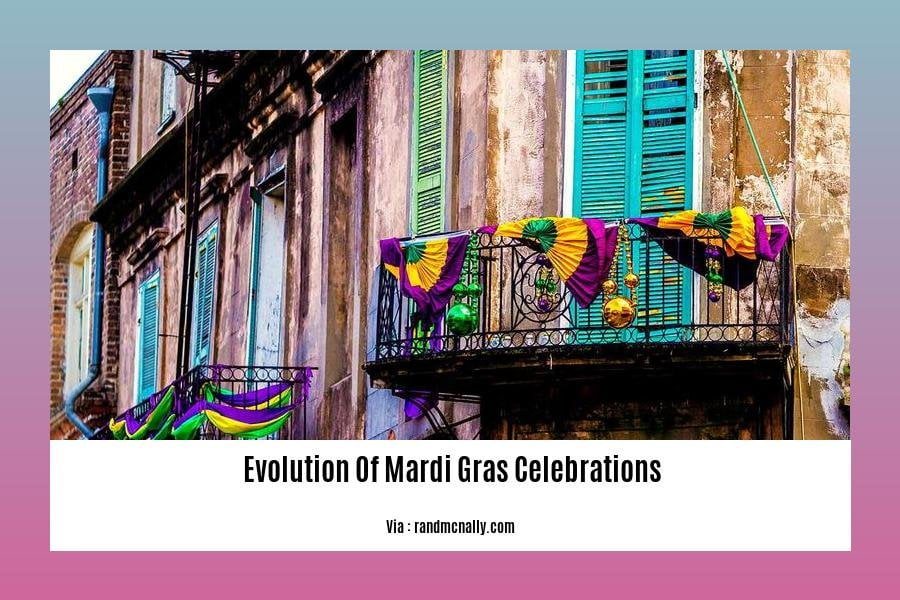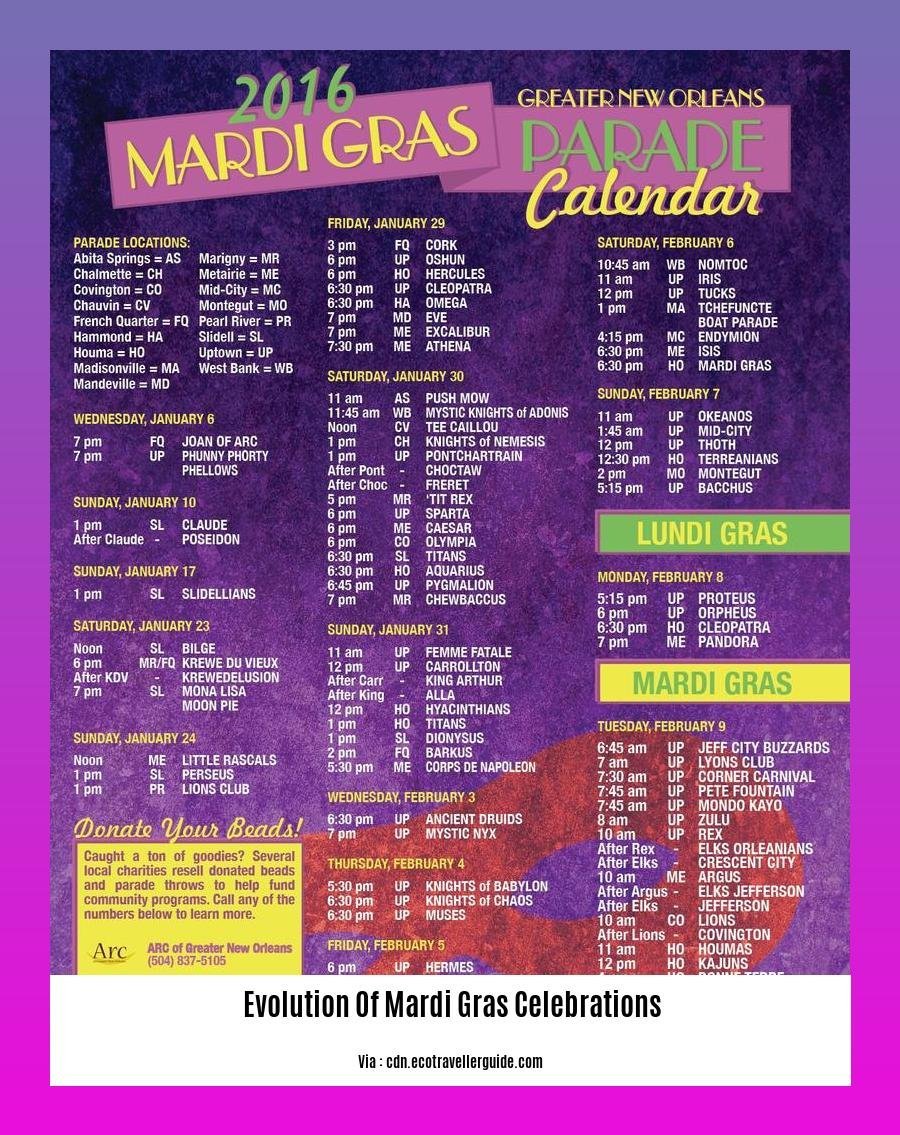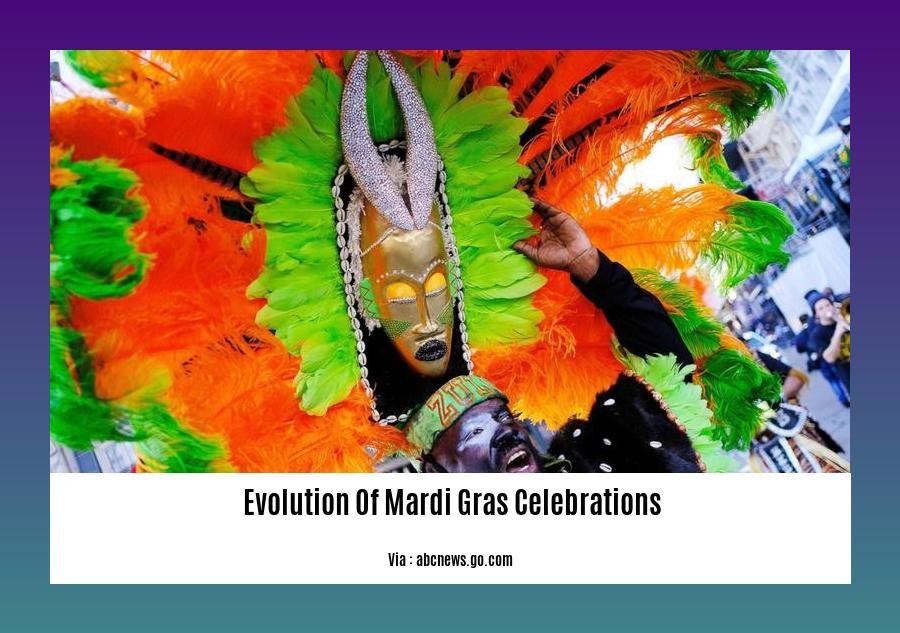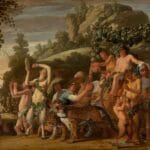Dive into [- The Evolution of Mardi Gras Celebrations: From Ancient Traditions to Modern Day Festivities] and explore the journey of this iconic festival. From its pagan roots to its boisterous modern iterations, Mardi Gras has undergone a fascinating transformation, reflecting the cultural, social, and artistic shifts of different eras. Join us as we uncover the origins, evolution, and enduring appeal of this captivating celebration that continues to enthrall millions worldwide.
Key Takeaways:
- Mardi Gras originated from ancient Roman festivals and medieval European carnival celebrations.
- It was brought to North America by French explorers and settlers, initially celebrated as “Boeuf Gras.”
- The festival is traditionally held on Fat Tuesday, the day before the Lenten period of fasting.
- Key traditions of Mardi Gras include feasting, costuming, and parades.
- Costumes and masks allow for freedom of expression and the disguise of identities.
Evolution of Mardi Gras Celebrations

Ancient Roots
The origins of Mardi Gras can be traced back to ancient Roman festivals like Lupercalia, where fertility and the end of winter were celebrated.
Medieval Transformation
Christian Church infused Mardi Gras with pagan rituals, creating a carnival period before Lent. Revelers indulged in feasting and dressing up to shed inhibitions.
New World Arrival
French explorers brought Mardi Gras to North America in the 17th century. In New Orleans, it became known as “Boeuf Gras” and was celebrated with elaborate feasts and masked balls.
Traditions Evolving
Over time, Mardi Gras traditions evolved. “Fat Tuesday,” the climax of the festival, continued to mark the end of indulgence before Lent. Costuming and parades became integral, allowing for anonymity and expression.
Contemporary Celebrations
Today, Mardi Gras is a vibrant celebration enjoyed worldwide. Elaborate parades, colorful costumes, and street parties showcase the festival’s enduring appeal. Its origins, once rooted in ancient rituals, continue to shape its modern-day festivities.
Impact on Society
Mardi Gras has had a profound impact on society:
- Preserving Cultural Heritage: It provides a platform for preserving traditional customs and folklore.
- Economic Engine: The festival generates tourism revenue and supports local businesses.
- Sense of Community: It fosters a sense of belonging and unites people from diverse backgrounds.
Conclusion
The Evolution of Mardi Gras celebrations is a testament to its enduring legacy. From its humble roots to its vibrant modern form, Mardi Gras continues to captivate and entertain, preserving cultural traditions while embracing the spirit of revelry and joy.
Immerse yourself in the vibrant tapestry of Mardi Gras’s rich history, tracing its origins back to ancient festivities. Explore the French roots of Mardi Gras, which have indelibly shaped its traditions and pageantry. Discover how New Orleans has become the epicenter of this exuberant celebration, with vibrant parades, lively music, and an infectious spirit that captivates all.
Evolution of Mardi Gras in the United States

Imagine a lively blend of history, vibrant colors, and infectious rhythms – that’s the essence of Mardi Gras. This beloved festival has enthralled revelers for centuries, and its journey to America has been an exciting one.
Key Takeaways:
- The first Mardi Gras celebration in the US is believed to have taken place in Mobile, Alabama in 1703.
- New Orleans hosts the largest and most famous Mardi Gras celebration, with the first parade taking place in 1837.
- Mardi Gras is a pre-Lenten celebration, with its festivities culminating on Fat Tuesday.
- The festival is renowned for its elaborate parades, extravagant costumes, and the iconic king cake.
Arrival in the New World
French explorers brought the Mardi Gras tradition to America in the 17th century. The first celebration is thought to have taken place in Mobile, Alabama in 1703. New Orleans embraced the festival with gusto, and its celebration has since become the most renowned in the country.
Evolution of Traditions
Over time, Mardi Gras in the US has evolved to include unique elements. The “Fat Tuesday” before Ash Wednesday became the climax of the festival. Elaborate parades featuring colorful floats and costumed revelers became an integral part of the celebration.
Cultural Carnival
Mardi Gras is a testament to the cultural heritage of America. It reflects the diverse influences that have shaped the country, from French to African and Creole traditions. The festival’s vibrant spirit fosters a sense of community and brings people together.
Citations:
Modern-day Mardi Gras celebrations and commercialization
Mardi Gras has evolved significantly over the centuries, and modern-day celebrations often have a strong commercial element. In some cities, the festival has become a major tourist attraction, with businesses capitalizing on the opportunity to generate revenue. This has led to the development of a wide range of Mardi Gras-themed products, including food, drinks, souvenirs, and costumes.
Key Takeaways:
- Modern-day Mardi Gras celebrations often have a strong commercial element.
- Businesses have capitalized on the opportunity to generate revenue from the festival.
- A wide range of Mardi Gras-themed products have been developed.
Sources:
- Mardi Gras: A Journey from Paganism to Modern Revelry
- Top 10 things to know about Mardi Gras
Mardi Gras as a reflection of social and cultural change
Mardi Gras is more than just a party; it’s a mirror reflecting the social and cultural shifts that have shaped our world.
From Pagan Roots to Christian Carnival:
Mardi Gras originated in ancient pagan festivals celebrating spring and fertility, like the Roman Saturnalia. As Christianity spread, the Church adapted these pagan customs into a pre-Lenten carnival period.
New World Adaptations:
When French explorers brought Mardi Gras to America in the 17th century, it took on new forms, influenced by local cultures and traditions. In New Orleans, the festival evolved into a vibrant celebration of Creole and Cajun heritage.
Evolving Customs:
Over time, Mardi Gras traditions have continued to evolve. Costuming and parades became central elements, symbolizing the shedding of social norms and the embrace of revelry.
Unifying Force:
Mardi Gras has always served as a unifying force, bringing people together from diverse backgrounds. It celebrates the shared experience of human joy, creativity, and the release of inhibitions.
Economic Impact:
Beyond its social and cultural significance, Mardi Gras has a substantial economic impact on host cities. The festival generates revenue for businesses, attracts tourists, and supports local economies.
Key Takeaways:
- Mardi Gras is a multifaceted festival that reflects the fusion of pagan and Christian traditions.
- The evolution of Mardi Gras customs mirrors social and cultural changes over time.
- Parades, costumes, and revelry symbolize the shedding of social norms and the embrace of celebration.
- Mardi Gras fosters unity and brings people together from diverse backgrounds.
- The festival generates significant economic benefits for host cities.
Relevant Sources:









